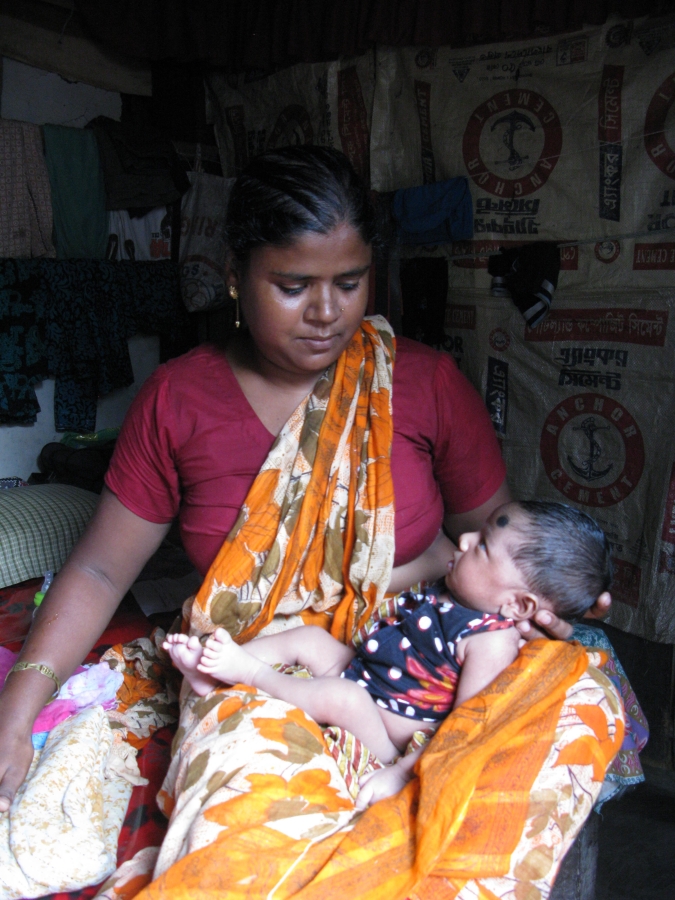Photo: A Bangladeshi mother caring for her infant
A heavily pregnant woman, Tasnim, from a small town in the southwestern part of Bangladesh arrived at a district hospital only to find out that she needed to share a bed with another delivering woman. As with expecting mothers everywhere, Tasnim only hoped for a smooth birth. Her labor had started, and the community health worker who attended her antenatal check-ups convinced her that it would be safer to give birth in the hospital. Later in the day, Tasnim found herself giving birth with the help of a nurse who seemed to do nothing other than yell at her when the labor pain excruciated her. Still, Tasnim’s family needed to run to the closest drug shop repeatedly as the necessary medication was not available at the hospital.
Because of the cultural and traditional beliefs, it is still uncommon for women in Tasnim’s town to give birth in facility. Women are expected and also prefer to give birth in the comfort of their home, with the help of relatives or familiar community members. This practice is not unique to Bangladesh but is widespread globally. Considered as contributing to the high burden of maternal and newborn deaths, governments around the world have made considerable efforts to ensure that pregnant women no longer give birth at home. It is argued that the health of mothers and newborns can be best protected when births are assisted by capable personnel armed with the requisite supplies and equipment in case of emergency.
The effort undoubtedly has yielded a paramount result. In Bangladesh for example, a considerable increase in facility births was achieved by the end of the Millennium Development Goals era in 2015. Similar statistics were shared by other countries. Though this improvement has some ostensible effect on neonatal deaths, unfortunately it doesn’t have an apparent impact on maternal deaths. Previous studies have indicated that progress in facility birth needs to be accompanied with high quality maternity care if substantial reduction in maternal and neonatal deaths is to be achieved. Recognizing this, in 2008, the World Health Organization developed and introduced the 29-items Safe Childbirth Checklist (WHO SCC) as a tool to facilitate health workers’ adherence to practices known to improve maternal and newborn health.
While awaiting the evidence of its effectiveness in reducing maternal and newborn deaths, WHO SCC implementations from India, Sri Lanka, Namibia, Italy, Brazil and Bangladesh have demonstrated that it has the potential to improve health workers’ performance and adherence to essential childbirth practices. From my personal experience with SCC implementation in Bangladesh, I learned that it can expose existing facility readiness to deliver quality care to the mothers. SCC prompts the health workers to perform essential childbirth practices, most of which are impossible without the requisite infrastructure, supplies or medicine. More fundamentally, these practices are difficult to be performed without the availability of health workers with adequate knowledge and skills. Unsurprisingly, this is also what has been highlighted by WHO SCC implementations in other places.
This forces us to take a long hard look at how health systems support maternity care. Health system strengthening has been an important agenda in the past decade and gained even more attention with the current quest to achieve universal health coverage. It is undeniably a significant and relevant call if we want to ensure that improvement in facility birth coverage will lead to the highest health outcomes for mothers and newborns. It is a high time for us to strive for a better health system capable of delivering quality maternity care, and implementing WHO SCC can be the first step in doing so.
